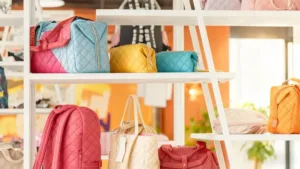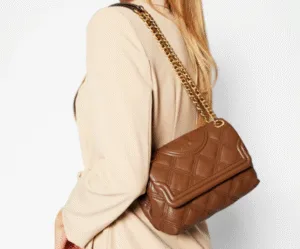The global demand for custom leather handbags continues to grow as consumers increasingly seek personalized, high-quality products that reflect both style and durability. For brands, retailers, and distributors, investing in custom leather handbags is more than just adding a new product category — it is a strategic move to capture higher profit margins, strengthen brand identity, and differentiate in a highly competitive market.
Unlike mass-produced bags, custom leather bags allow businesses to tailor designs, materials, and features according to their target audience. This level of flexibility not only meets the rising expectations of fashion-conscious customers but also creates long-term brand loyalty. For B2B players, working with a reliable leather handbag manufacturer ensures consistent quality, scalable production, and the ability to quickly adapt to market trends.
Contents
What is a Custom Leather Bag and How Does It Work?
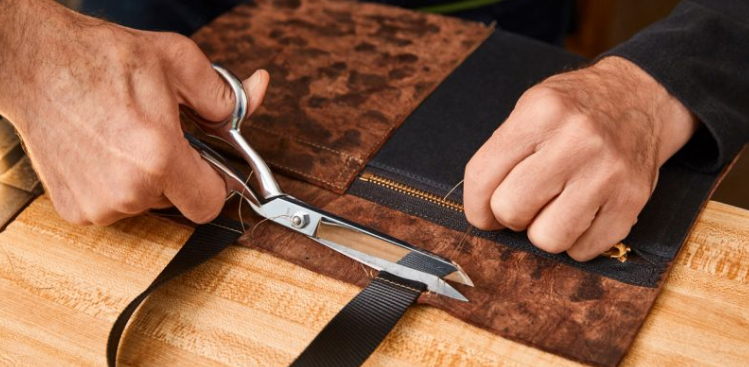
A custom leather bag refers to a handbag that is designed or adjusted by a brand or retailer based on their specific requirements. Unlike mass-produced products, these bags are manufactured by professional bag suppliers or factories, following client specifications such as design, material, color, logo, and functionality. Custom leather bags help brands build uniqueness, increase market value, and enhance customer loyalty.
In business collaborations, the production of custom leather bags mainly operates under two models:
-
OEM (Original Equipment Manufacturer)
-
Definition: The client provides the design, specifications, and brand, and the factory manufactures accordingly.
-
Best for: Companies with established design capabilities and clear brand positioning.
-
Advantages: Ensures uniqueness and consistency by producing strictly according to the brand’s standards.
-
-
ODM (Original Design Manufacturer)
-
Definition: The factory provides ready-made design solutions, which clients can directly select or customize before branding.
-
Best for: Companies looking to enter the market quickly or those without complete design resources.
-
Advantages: Saves on R&D costs and time, enabling faster product launches.
-
By partnering with reliable leather bag suppliers, brands can flexibly choose between leather bag OEM and ODM models, or even combine them with a dropshipping leather bags approach. This allows businesses to adopt a low-risk bag model with low overhead, shipping products directly to customers across different channels.
Market Trends in Custom Leather Handbags
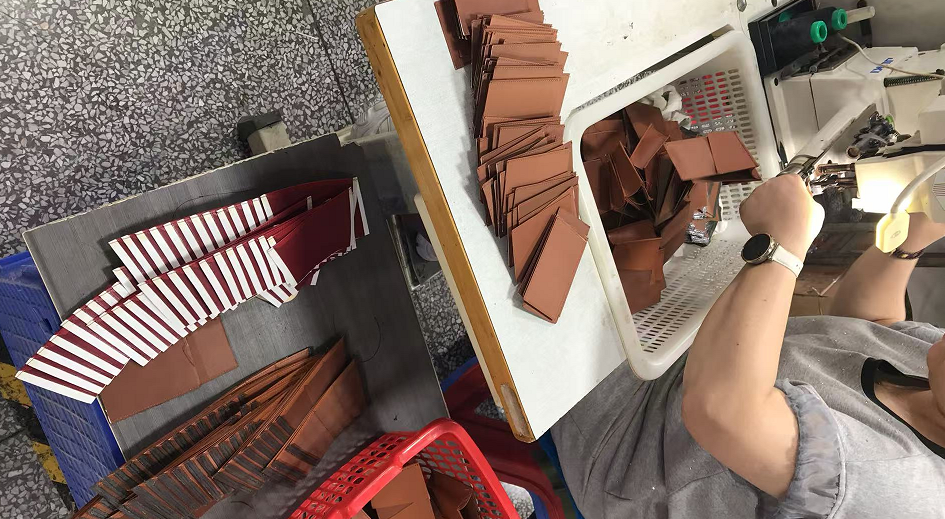
The global leather handbag market has been experiencing steady growth, driven by rising consumer demand for premium and customizable fashion products. According to recent industry reports, the market is projected to expand at a CAGR of around 5–6% over the next five years, fueled by both luxury and mid-range segments.
From a consumer perspective, three preferences stand out:
-
Sustainability: More shoppers are looking for vegan leather bags and eco-friendly production processes.
-
Minimalism: Clean lines, timeless silhouettes, and versatile colors are gaining popularity, especially in custom leather handbags.
-
Functionality: Multi-compartment totes, convertible backpacks, and multi-purpose crossbody bag designs are in demand, aligning with modern, on-the-go lifestyles.
For B2B buyers, these trends create opportunities to partner with suppliers who can deliver innovative materials, flexible customization, and scalable production. By offering a diverse leather bag selection that aligns with these consumer expectations, brands can strengthen their position in competitive markets and build long-term loyalty.
Dropshipping Leather Bags vs Wholesale Model
When entering the leather bag business, brands often consider two main approaches: dropshipping leather bags and traditional wholesale leather bag distribution. Each model has distinct advantages and challenges.
-
Dropshipping Leather Bags
-
A low-risk model with low overhead, as businesses don’t need to hold inventory.
-
Products are shipped directly from the bag supplier to customers, reducing upfront investment.
-
Ideal for startups testing new markets or product lines.
-
Limitation: less control over shipping times and packaging, which may affect brand experience.
-
-
Wholesale Model
-
Businesses purchase products in bulk from bag suppliers or manufacturers at discounted rates.
-
Higher upfront investment due to inventory storage, but offers better control over quality, branding, and delivery speed.
-
Suitable for established brands aiming for consistent supply and stronger profit margins.
-
For startup bag brands, dropshipping provides a fast entry into the market with minimal financial risk, while wholesale is better suited for companies ready to scale operations and build long-term supplier partnerships. The best strategy often lies in combining both models — starting with dropshipping to test demand, then shifting to wholesale once a product line proves successful.
Which Leather Bags Are Best for Customization?
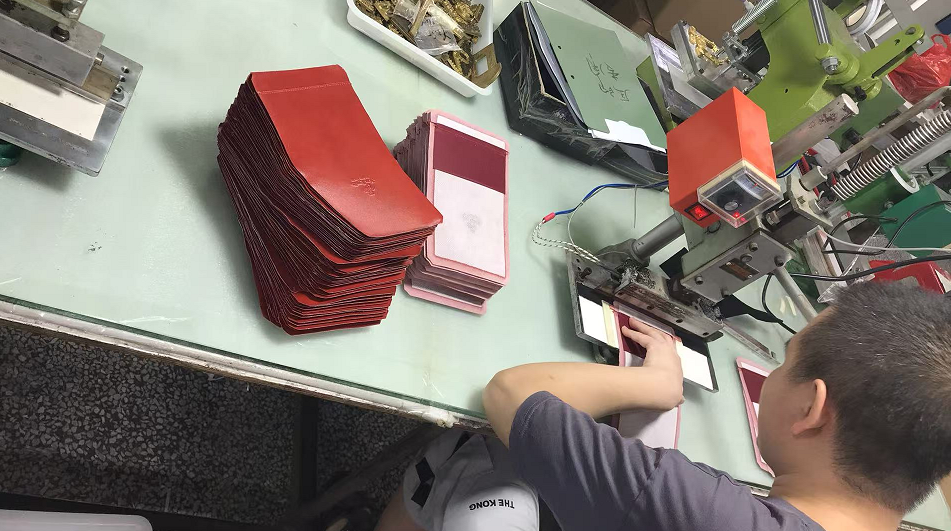
In the custom leather bag market, different types of leather bags have unique market advantages and profit potential. Unlike standard ready-made products, custom leather handbags allow brands to differentiate themselves through materials, colors, craftsmanship, and logo placement.
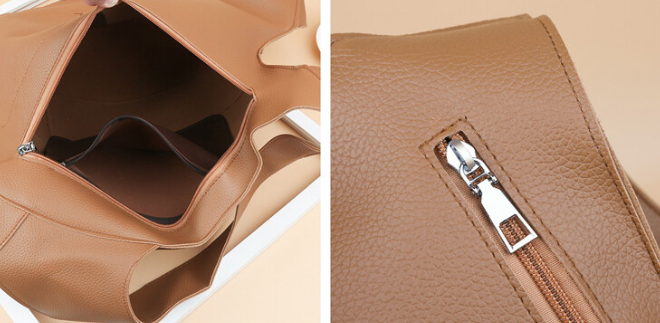
The following categories consistently perform well globally and are particularly suitable for expansion through OEM, ODM, or dropshipping leather bags models:
Tote Bags
Why It Sells: Tote bags are both stylish and practical, making them a timeless choice for work, commuting, and shopping.
Profit Potential: Moderate per unit, but high sales volume provides a stable revenue stream.
Customization Highlights: Genuine leather, vegan leather, or canvas blends; large logo embossing or color printing.
Marketing Tips: Position as “eco-friendly daily bags” or “premium work totes” to enhance perceived value.
Leather Backpacks
Why It Sells: Combines casual and professional use, appealing to students as well as business and travel consumers.
Profit Potential: Larger size and more complex design result in higher per-unit profits than totes.
Customization Highlights: Reinforced stitching, waterproof coating, laptop compartments.
Marketing Tips: Target “urban commuter” or “travel+work” niches with story-driven marketing.
Cosmetic Bags & Pouches
Why It Sells: Lightweight, portable, and affordable; perfect for bundling and frequent purchases, especially among female consumers.
Profit Potential: Low production cost with high potential when sold in bundles.
Customization Highlights: Premium leather finishes, waterproof lining, multi-compartment design.
Marketing Tips: Bundle with beauty or travel sets; emphasize convenience and organization.
Travel & Gym Bags
Why It Sells: Global travel and fitness trends drive demand for these functional bags.
Profit Potential: Strong, especially for waterproof or feature-rich models, offering higher margins.
Customization Highlights: Shoe compartments, waterproof layers, foldable designs, built-in USB ports.
Marketing Tips: Showcase lifestyle scenarios such as airports, gyms, or outdoor activities to directly appeal to target audiences.
Specialty Leather Bags
Why It Sells: Unique functions like fireproofing, waterproofing, or odor-proofing solve specific problems and attract niche high-paying customers.
Profit Potential: High per unit due to rarity and specialized features, ideal for brand differentiation.
Customization Highlights: Specialty coatings, protective lining, durable zippers.
Marketing Tips: Suitable for outdoor, tech, or luxury brands; emphasize safety, durability, and professional-grade quality.
In the custom bag market, different types of leather bags offer distinct advantages and profit potential. Unlike ready-made products, custom leather handbags allow brands to differentiate themselves through materials, colors, finishes, and logos. Below are some bag categories that consistently perform well globally, particularly suitable for OEM, ODM, or dropshipping leather bags models:
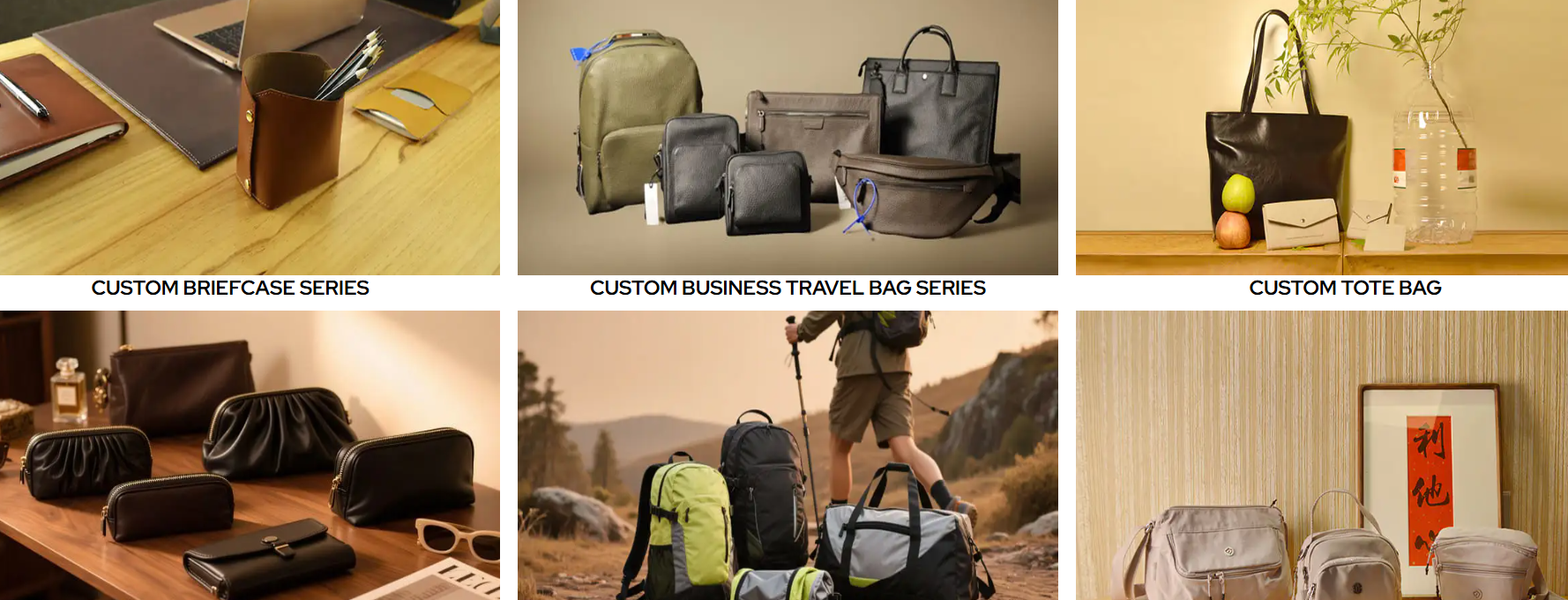
|
Bag Type |
Why It Sells |
Profit Potential |
Customization Options |
Target Audience / Marketing Tips |
|---|---|---|---|---|
|
Tote Bags |
Versatile and stylish, ideal for commuting, shopping, and work |
Medium per unit, high sales volume |
Genuine leather, vegan leather, canvas blends; large logo embossing or color printing |
Market as “eco-friendly daily bags” or “premium work totes” to increase perceived value |
|
Leather Backpacks |
Combines casual and professional use; popular among students and travelers |
Higher than totes due to size and complexity |
Reinforced stitching, waterproof coatings, laptop compartments |
Target “urban commuters” or “travel+work” niches with story-driven marketing |
|
Cosmetic Bags & Pouches |
Lightweight and affordable; high-frequency purchase for female consumers |
High potential through bundling; low production cost |
Luxury finishes, waterproof lining, multiple compartments |
Bundle with beauty or travel sets; highlight convenience and organization |
|
Travel & Gym Bags |
Driven by travel culture and fitness lifestyle |
Strong potential, especially for waterproof or feature-rich models |
Shoe compartments, USB ports, foldable designs |
Use lifestyle marketing—show airport, gym, or outdoor usage |
|
Specialty Bags (Fireproof, Waterproof, Odor-proof) |
Solves specific problems, appealing to niche high-paying buyers |
Very high per unit due to unique functionality |
Protective lining, specialty coatings, durable zippers |
Ideal for outdoor, tech, or premium brands; emphasize safety and reliability |
Choosing the right custom leather bag is not just about aesthetics. It also depends on demand alignment, profit margins, and brand positioning. Tote Bags and Leather Backpacks provide strong sales foundations, Cosmetic Bags & Pouches and Travel & Gym Bags boost profits, while Specialty Bags help brands stand out with unique selling points. Partnering with reliable suppliers ensures consistent quality, scalable production, and the flexibility to explore dropshipping leather bags for a low-risk model with low overhead, shipping products directly to customers.
How to Choose a Reliable Custom Leather Bag Supplier
Selecting a trustworthy custom leather bag supplier is critical for any brand or retailer aiming to produce profitable leather bags while minimizing risks. The right supplier not only ensures a consistent leather bag selection but also supports scalable production, flexible customization, timely delivery, and effective leather bag branding. Here are key factors to consider:
1. Manufacturing Expertise and Experience
Look for suppliers with proven experience in producing custom leather handbags, including OEM and ODM services. Experienced manufacturers understand quality standards, leather types, stitching techniques, and finishing options, which is essential for creating profitable leather bags and avoiding legal or branding pitfalls for leather bags.
2. Product Quality and Materials
Inspect the bag supplier’s material sourcing and quality control processes. Reliable partners use high-quality leather (genuine, vegan, or specialty finishes) and durable hardware. They should provide samples or certifications. Consistent quality enables brands to price leather bags profitably, reduce returns, and enhance reputation.
3. Customization and Branding Capabilities
A strong supplier should support a wide range of customization options, including logo embossing, color variations, lining, compartments, and packaging. This flexibility allows brands to explore different styles and target different leather bag niches while building distinct leather bag branding in the market.
4. Production Capacity and Lead Time
Ensure the supplier can handle your required volume, whether for dropshipping leather bags or bulk bag wholesale. Check lead times for samples and production to guarantee timely delivery, which is crucial for managing seasonal demand and maintaining profitability.
5. Communication and Support
Effective communication is essential. A reliable supplier will provide clear updates, answer technical questions, and collaborate with your design and marketing teams. Look for partners who act as long-term collaborators, helping you target different leather bag niches and optimize your pricing and profitably strategy.
6. Ethical Practices and Sustainability
Brands increasingly value suppliers with ethical manufacturing practices, including fair labor conditions and environmentally conscious processes. Partnering with responsible suppliers aligns your brand with growing consumer demand for sustainable products, strengthens leather bag branding, and reduces risks associated with legal or branding pitfalls for leather bags.
Choosing a reliable custom leather bag supplier involves evaluating expertise, quality, customization flexibility, production capacity, communication, and ethical practices. By partnering with the right supplier, brands can confidently produce profitable leather bags, explore dropshipping leather bags for a low-risk model with low overhead, deliver bags directly to customers, and optimize pricing leather bags profitably while building strong leather bag branding.
Conclusion
Entering the custom leather handbag market offers significant opportunities for brands and retailers to create profitable leather bags, strengthen leather bag branding, and reach niche audiences. By understanding market trends, carefully selecting products, and leveraging OEM, ODM, or dropshipping leather bags, businesses can adopt a low-risk model with low overhead while delivering high-quality products directly to customers.
Partnering with reliable custom leather bag suppliers is crucial to ensure consistent quality, flexible customization options, and timely delivery. By evaluating suppliers based on expertise, production capacity, communication, ethical practices, and compliance, brands can mitigate legal or branding pitfalls for leather bags and optimize pricing leather bags profitably.
Whether you’re launching tote bags, leather backpacks, cosmetic bags, travel & gym bags, or specialty leather bags, targeting different niches and offering tailored solutions helps differentiate your brand and capture customer loyalty.
Take Action: Collaborate with professional suppliers to design, manufacture, and market your unique custom leather handbags. By combining innovation, quality, and smart strategy, your brand can confidently scale, maximize profits, and establish a lasting presence in the competitive leather bag market.



